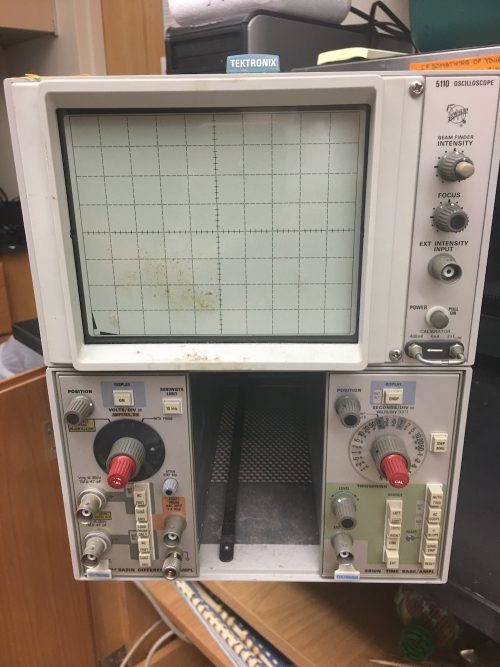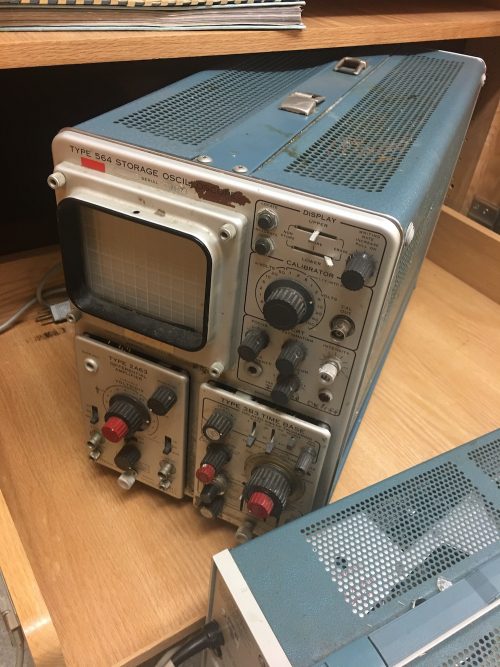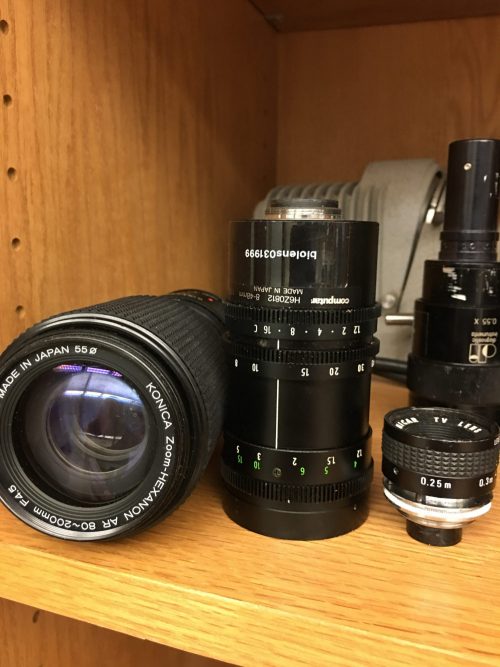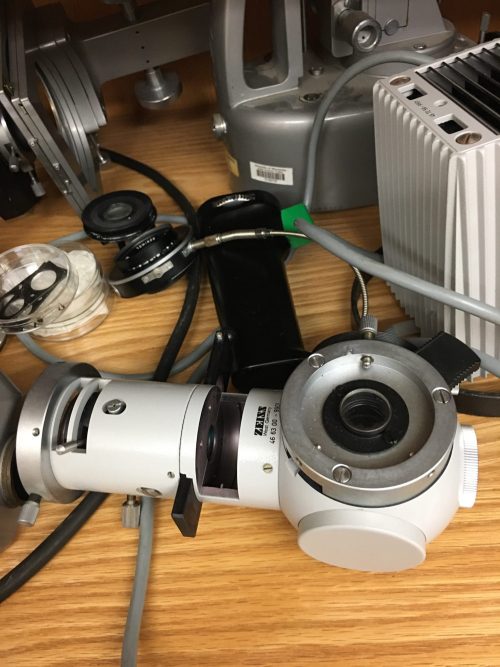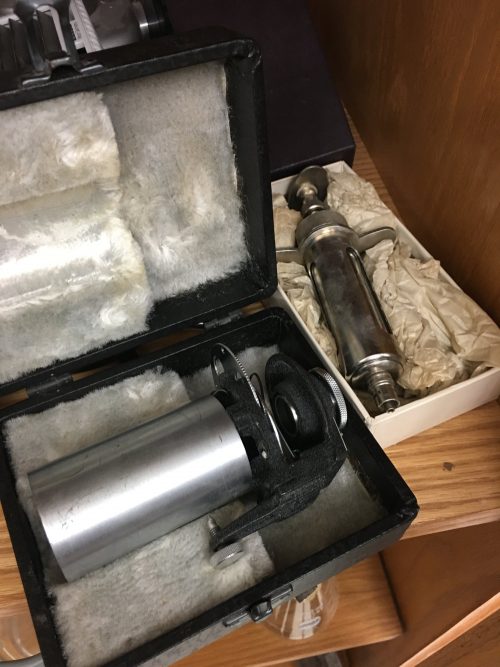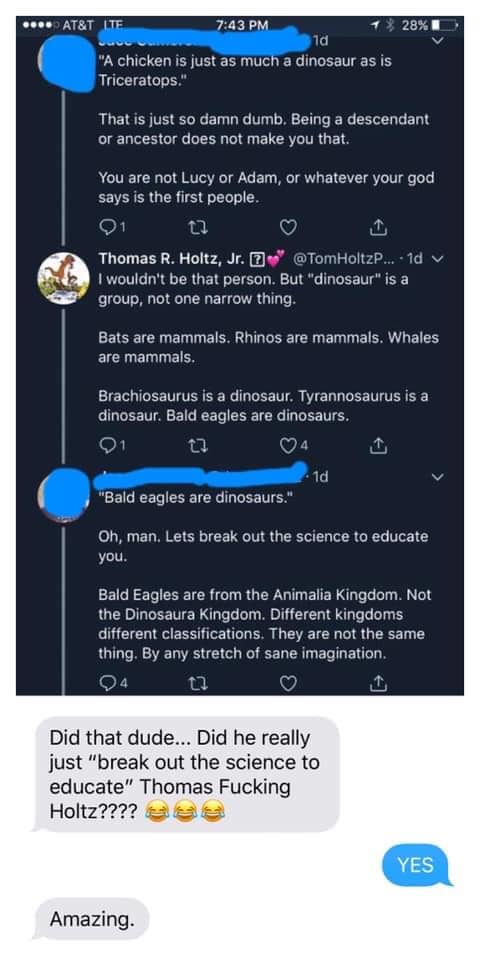Something for everyone! In the last spider zen thread, I showed off my collection of junk optics, and someone mentioned Tektronix oscilloscopes. I have those, too! Two of them!
These are relics of my old days, when I spent my day punching teeny-tiny electrodes into teeny-tiny neurons. I wasn’t a hard core electrophysiologist, I was mainly interested in delicately poking in without killing the cells so I could fill them up with interesting probes that glowed all kinds of garish colors. I brought them here with me with the idea of using them in neuroscience classes, but it turns out that you need all kinds of other infrastructure to do neurobiology of that sort right, which a small liberal arts college lacks (unless you’ve got a core of several faculty who were interested in building that infrastructure, which we didn’t have — I was alone.)
Anyway, these almost certainly don’t work anymore. They were old and finicky when I was using them, and they’ve been neglected for 20 years.
But who cares? Here’s a spider.


